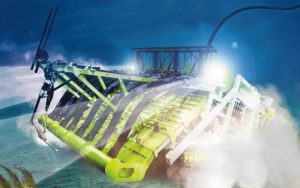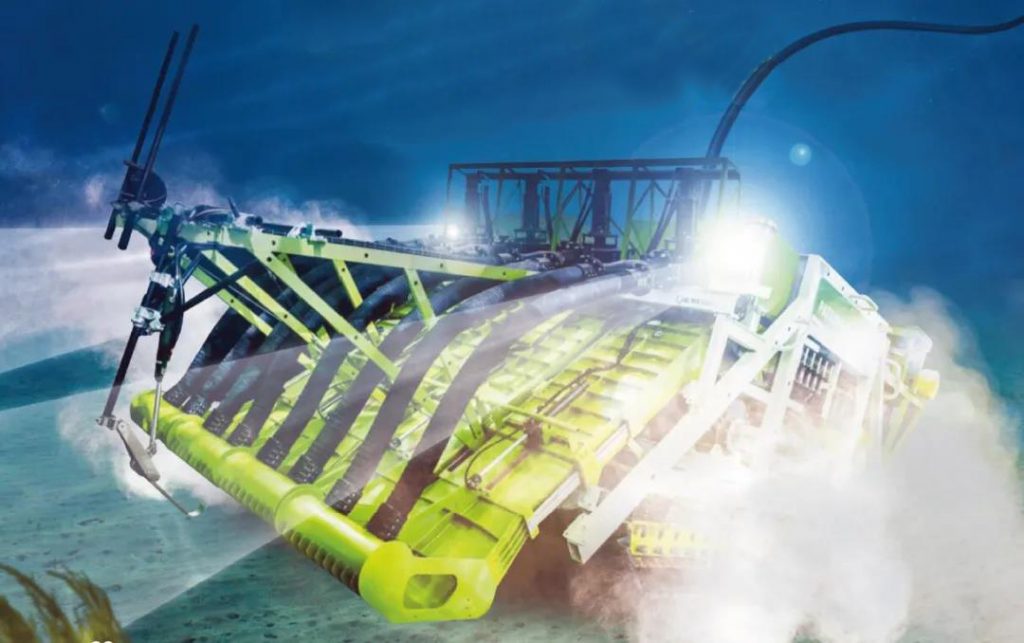
In addition to biological resources, the mineral resources of the seabed are also extremely rich. The earliest discovery of mineral resources on the sea floor was the British frigate Challenger in 1872.
At that time, scientists on board collected some massive stones on the seabed several kilometers deep. These stones were found by later scientists to be rich in metals such as manganese, nickel and copper.
150 years later, countries such as China, the United States, and Japan began to set mining targets on these massive stones.
The seabed full of “land” resources
Different depths of the seabed have different mineral resources. From shallow to deep, first is 800-2400 meters of the seafloor, where the minerals are mainly manganese nodules, a kind of mass rich in cobalt, vanadium and copper and other metal materials.
At present, humans mainly mine at this depth. Operation. Go deeper and come to the bottom of 1400-3700 meters, where there are sulfide deposits, which are mainly composed of metal materials such as gold, silver and copper.
Finally, come to the seabed at 4000 to 6000 meters, where the minerals are also manganese nodules, but the main components of these manganese nodules are manganese, copper, cobalt and nickel.
Scientists estimate that these minerals add up to more than 3 trillion tons, of which the reserves of copper are 88 times the amount that can be mined on the land, and the reserves of cobalt are more than 5,000 times the amount that can be mined on the land. These two metal substances It is also one of the main goals of seabed miners.

With the development of science and technology and green energy technology, people’s demand for electricity is getting higher and higher, and this requires more and thicker cables to transmit electricity.
Copper is the second most conductive metal (silver in the first place), and it is also the main constituent of wires in cables, and its demand has also increased.
Today the copper on land mainly comes from chalcopyrite and chalcocite. Because these minerals contain sulfur, they also produce sulfur dioxide during the process of producing copper, which will pollute the environment.
However, manganese nodules do not contain sulfur, so it does not have the environmental pollution problems of chalcopyrite and chalcocite during the production process.
Cobalt is the most important material for making lithium-ion battery cathodes. In addition, nowadays, the batteries of electric vehicles cannot be separated from cobalt, and there will be more and more electric vehicles in the future, so it is foreseeable that the demand for cobalt will also increase.
Now the world’s cobalt mainly comes from the Democratic Republic of Congo in Africa, and the country’s annual cobalt production even exceeds the sum of other countries.
There are three main problems with cobalt production here. First, there are frequent conflicts in the mining areas of the Democratic Republic of the Congo. Second, during mining, due to the primitive conditions of the equipment, the pollutants generated by the mining will overflow and pollute the surrounding natural environment.
Third, it is not only adult workers who mine, but also child labor and slaves. These factors have made the production of cobalt raw materials unstable.
In order to have a more stable source of cobalt and indirectly help children and people called slaves in the Democratic Republic of Congo, scientists have even more reason to mine seabed minerals.
The seabed sweeping operation is in progress
So how to conduct seabed mining? At present, the scientists intend to use a submarine vacuum stone absorbing vehicle.
This submarine vacuum stone suction vehicle is called Patania II. It is about the size of a bus, weighs about 25 tons, and uses crawler tracks. It was first transported to the destination sea area by the German scientific research ship Cohen, and then descended to the bottom of the sea through the ropes and cables on the ship.
The Patania II is accompanied by small submarines and some measuring equipment, which are responsible for observing the impact of Patania II’s mining operations on the seabed environment.
Patania II, which has come to the bottom of the sea, will move slowly under the remote control of the scientists on board. The front of the vehicle is equipped with 4 “vacuum cleaners”, and each vacuum cleaner is also connected to two drain hoses.
The vacuum cleaner uses the pressure difference caused by the internal vacuum of Patania II to automatically suck manganese nodules into the body.
The suction power caused by this mode of operation can reach at least 5,000 tons, and it can also save a lot of energy.
The inner part of Patania II has two floors. The heavier objects sucked into the body will automatically sink to the bottom layer under the influence of gravity, and the bottom layer has a collection container.
Lighter substances, such as seafloor sediments, are pushed directly to the tail and discharged in the upper layer. There is also a filter at the tail to filter out the smaller manganese nodules.
The car is also filled with various sensors to monitor the operation of Patania II. After the collection container is full, the seabed mining vehicle will stop working and then be pulled back to the ship.
After the engineer unloads the minerals, the seabed mining vehicle will be sent to the seabed again to continue mining.
Seabed mining also needs to protect the environment
Will seabed mining affect the seabed environment? The small submarine and measuring equipment that entered the water with Patania II found that during the mining process, Patania II would inevitably inhale some small animals living on the seabed, thereby causing harm to the marine ecological environment.
The bottom silt discharged by mining vehicles will also drift upwards, thereby affecting the ecological environment of the upper layer of the bottom of the sea.
In some submarine hot spring areas where manganese nodules are more abundant, there are often some animals that are endangered by humans, such as scaly horned gastropod snails. If coupled with the infestation of mining vehicles, the scaly-horned gastropod snail is likely to become the dodo of the 21st century and become extinct.
Ironically, the reason why humans conduct seabed mining is to protect the environment. Now, scientists have to suspend seabed mining operations and continue to conduct research in order to produce or find a machine or method that can not only mine but also prevent damage to the ecological environment of the seabed in the future.
Comments